How To Grow Watermelon in the Arctic Circle
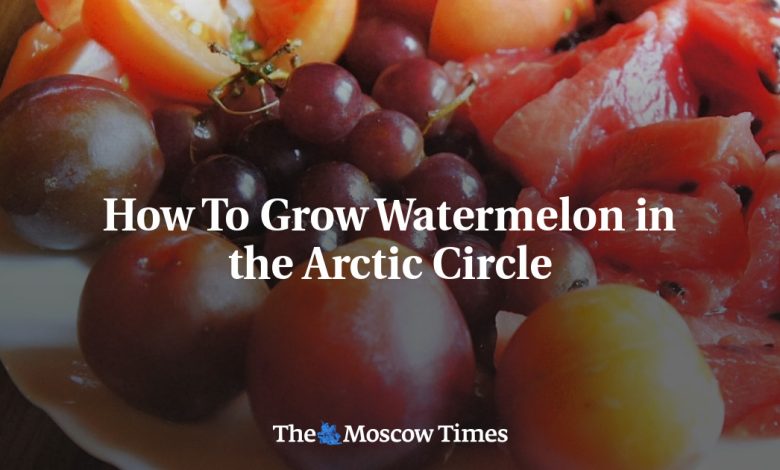
For most readers the region of Russia called Sakha — officially the Republic of Sakha (Yakutia) — in the far north conjures up images of snow, reindeer, permafrost and polar night.
But even though this region borders on the Arctic Ocean, these images are just stereotypes. Sakha is a country of honey and berries, strawberries and… watermelons.
In 1893, a journalist of the “Herald of Europe” was surprised to discover that “even bees are bred and watermelons are grown” in the region. “Spring barley grows best near the Nerchinsk plants. Winter crops are dying out. There are no fruit trees, but melons and watermelons grow to enormous sizes in greenhouses,” Ivan Shtukenberg wrote in his ‘Statistical Works’ back in 1860.
At the Irkutsk Fair of 1869, a peasant from the Yakutsk region, Joseph Spiridonov, received a commendation for a cauliflower weighing 10 pounds. A merchant with the apt agricultural name of Maria Kapustina (“Maria Cabbage Lady”) won an award for the watermelon she grew.
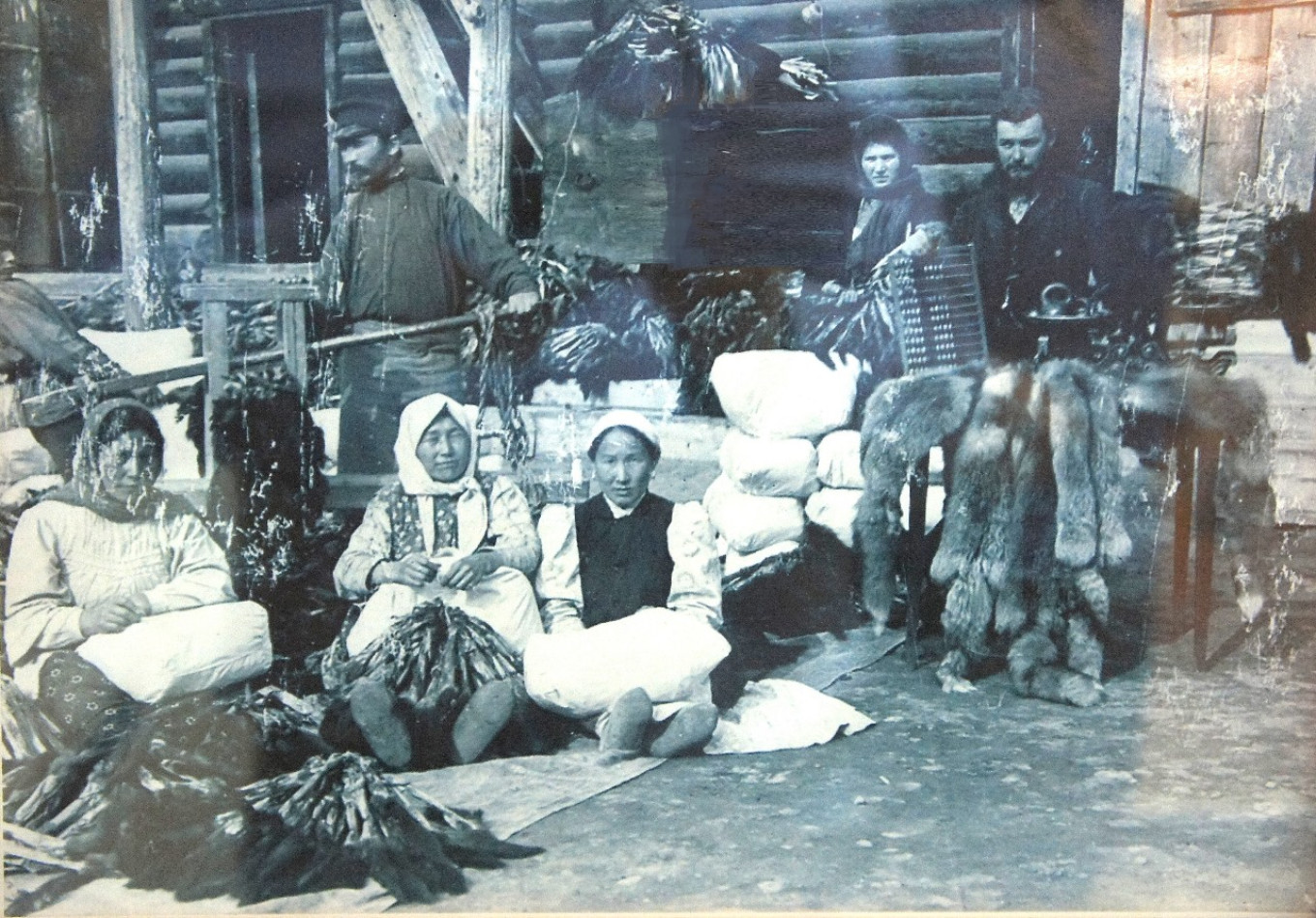
Courtesy of Museum of the History and Culture of the Peoples of the North, Yakutsk
The art of growing watermelons in this part of the world was not forgotten after the 1917 Revolution. “In January the night brings deadening slumber, while in August watermelons ripen under the bright shining sun. It is like an amusing fairy from A Thousand and One Nights, and yet it is reality,” wrote an author for the collection “Soviet Yakutia” in 1937.
We do not know who thought he saw a fairy tale in 1937, but some time ago these authors were quite surprised to find southern plants growing in the region. Of course, our reaction was largely due to stereotype of Sakha as a land of snow and ice. In fact, the assortment of local vegetables grown here is no poorer than in the Moscow region.
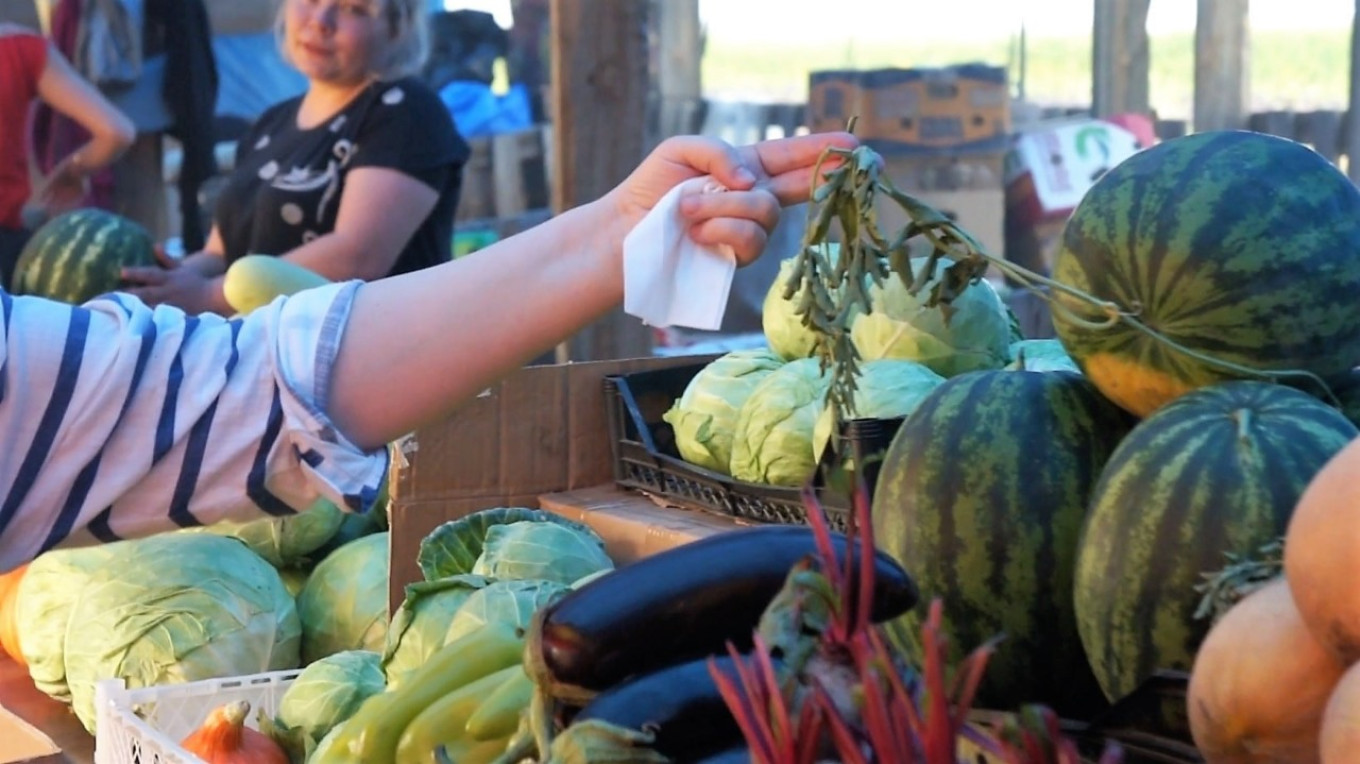
Courtesy of authors
We visited a farm of local farmers, one of the largest near Yakutsk. Fifteen types of vegetables are grown here along with produce used in canning and for other purposes.
“Our summers are short, but due to the long daylight hours the plants have time to ripen,” Artur Em, one of the farm managers, told us. “Therefore, any vegetable or berry with a growing season of less than two months can be grown in Yakutia.”

Courtesy of authors
The largest watermelon grown by the farmers weighed 15.5 kilograms. These results are thanks to the farmers’ serious scientific approach. They have introduced a drip irrigation system and experiment with varieties and planting dates in order to have time to grow and harvest the crops in the short Yakut summer.
But, of course, Sakha is not only famous for watermelons. The farm grows potatoes, cabbage, peppers, and zucchini. In large greenhouses there are dense cucumber plants and strawberry beds.
It is clear that agribusiness in these latitudes is a risky thing (but where is it not risky in Russia?). What saves the industry is the diversification of production and crops, a scientific approach, and plain old-fashioned diligence.
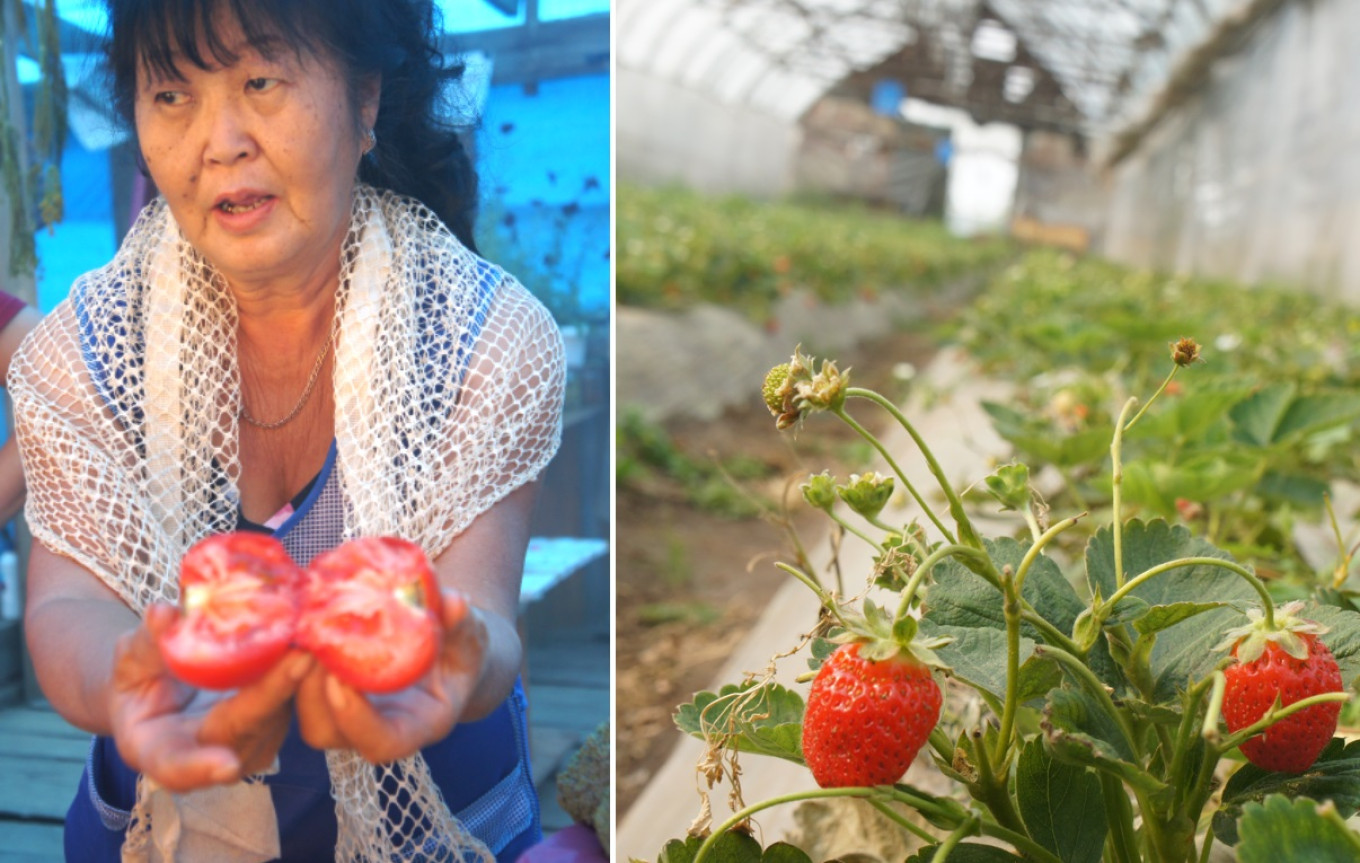
Courtesy of authors
But how can they preserve the flavor of watermelon over the long winter? It won’t last long in its natural form. Here salvation lies in the fact that Sakha became a kind of “melting pot” of nations and peoples back in the USSR. A lot of people from all over the country came here to build huge factories and mine minerals. Someone from Rostov-on-Don brought a three-hundred-year-old recipe for salted watermelon. Actually, to be exact, the main thing isn’t the salt but the fermentation. So this is really “fermented” or “pickled” watermelon.
You didn’t think that only cucumbers, tomatoes and cabbage can be fermented, did you? This is a fine example of how the ancient fermentation technology was adapted to the new fruits that people encountered in lands far away from their birthplace.
For those who are not yet ready for the taste of fermented watermelon, we will offer a more familiar one: marinated watermelon. Marinated watermelon is a great appetizer. It goes surprisingly well with cheeses: Adygean, Haloumi and even soy cheese — tofu. It can be served with meat and poultry as well.
Jars of watermelons will be sure to please you in the winter and be a pleasant surprise for guests around the New Year’s table. The more delicious the watermelon is when fresh, the more delicious it will be when it’s fermented or marinated. The main thing is to pick a watermelon that isn’t too ripe. Consistency of the fruit is very important. The watermelon should be dense and juicy, without and soft spots. Pick a slightly underripe, pink watermelon. You can prepare watermelon alone or together with grapes in one jar.
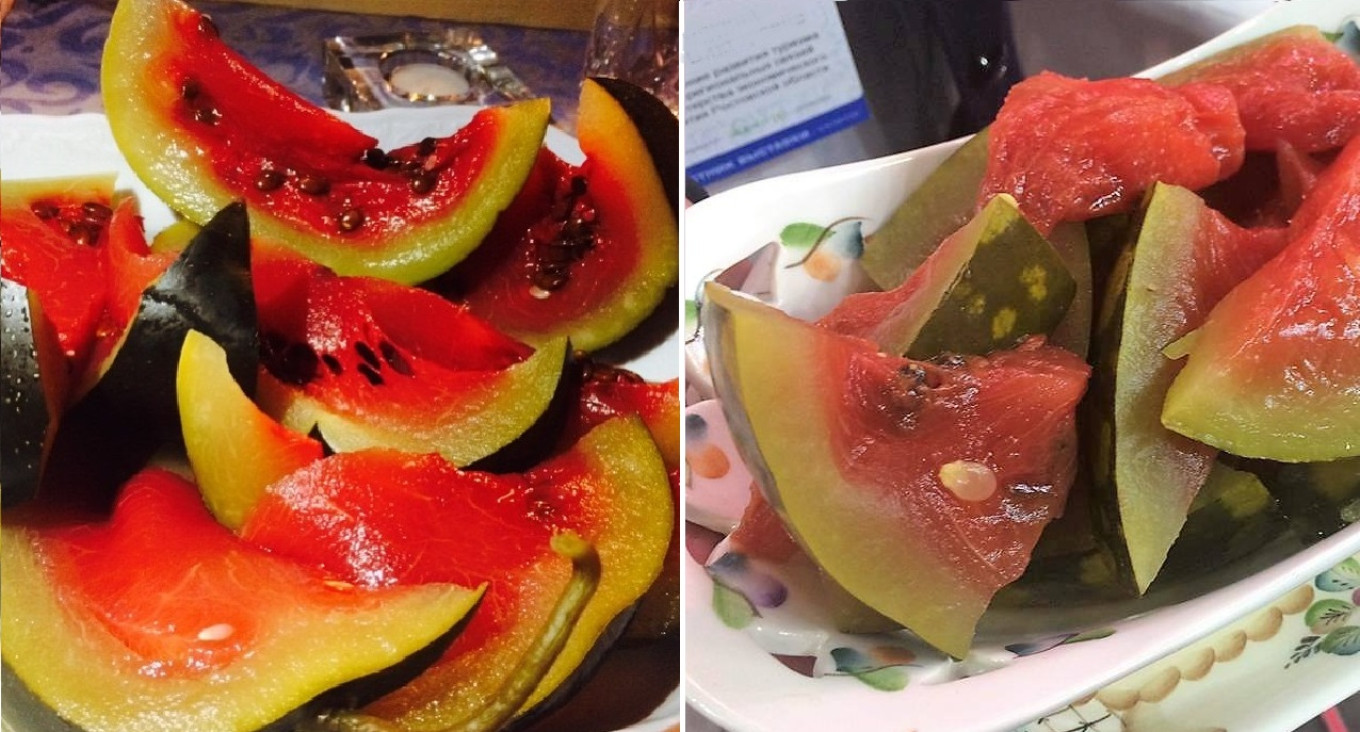
Marinated Watermelon and Grapes
Ingredients
- 2-2.5 kg (4.5-5.5 lbs) berries, such as watermelon (which is also a berry!) or small seedless grapes
- 3 liters (2 ¾ pints) water
- 1 Tbsp sugar
- 2 Tbsp salt
- 75 ml (1/3 c) 6% vinegar
- 1 Tbsp dry mustard
Instructions
- Wash the grapes and pull off stems. Cut the watermelon into pieces. Put everything in a jar
- Prepare the marinade. Boil the water with sugar and salt. Cool to a temperature of about 30 degrees, add vinegar and mustard.
- Pour over grapes and watermelon and leave for three days.
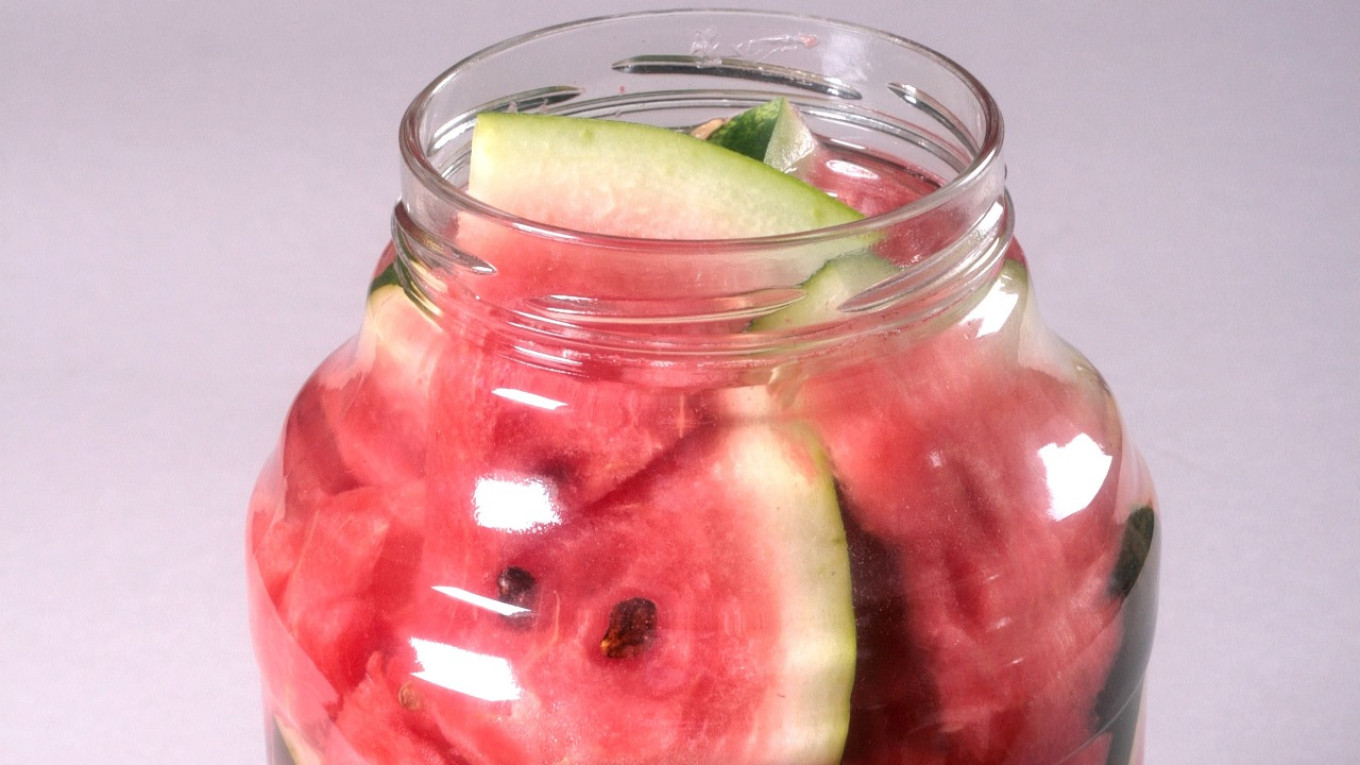
Watermelon Preserved with Garlic and Honey
For one three-liter jar
Ingredients
- 5 kg (3.3 lbs) watermelon
- 1 head garlic
- 3 Tbsp honey
- 2 Tbsp salt
- 2 Tbsp 9% table vinegar
Instructions
- Cut the watermelon into pieces and put in a jar along with the garlic.
- Pour in 1.5 liters of boiling water. Let stand for 10 minutes and drain the water into a saucepan. Add honey and salt, bring to a boil and pour over watermelon; then pour in vinegar.
- If available, cover the top with clean currant leaves, close with a plastic lid, cool and put in the refrigerator.
Test only after one month.
A Message from The Moscow Times:
Dear readers,
We are facing unprecedented challenges. Russia’s Prosecutor General’s Office has designated The Moscow Times as an “undesirable” organization, criminalizing our work and putting our staff at risk of prosecution. This follows our earlier unjust labeling as a “foreign agent.”
These actions are direct attempts to silence independent journalism in Russia. The authorities claim our work “discredits the decisions of the Russian leadership.” We see things differently: we strive to provide accurate, unbiased reporting on Russia.
We, the journalists of The Moscow Times, refuse to be silenced. But to continue our work, we need your help.
Your support, no matter how small, makes a world of difference. If you can, please support us monthly starting from just $2. It’s quick to set up, and every contribution makes a significant impact.
By supporting The Moscow Times, you’re defending open, independent journalism in the face of repression. Thank you for standing with us.
Continue
Not ready to support today?
Remind me later.
×
Remind me next month
Thank you! Your reminder is set.

